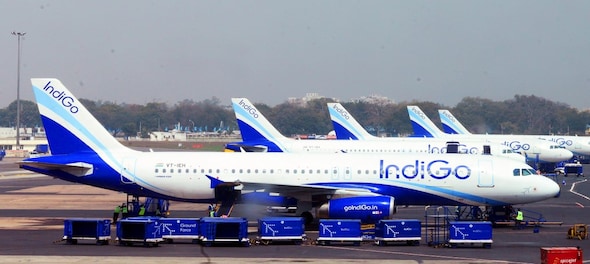
IndiGo, India’s largest carrier by domestic market share and fleet, has reached another milestone, after inducting its 250th aircraft. It is a first in Indian aviation.
IndiGo also became the first airline in the country to operate 1,500 daily departures. While it is a proud moment for IndiGo, it also is a badge of honour for aviation in India. According to data released by Indian regulator Directorate General of Civil Aviation (DGCA), India had a fleet of 243 aircraft at the end of fiscal year 2005-06, a few months before IndiGo started operations in August 2006. The total fleet in India stands at 650 aircraft as of now.
IndiGo’s growth has been nothing short of spectacular in recent years. The airline took 113 months to reach 100 aircraft and another 46 months to add 150 additional aircraft, increasing the fleet to 250 aircraft in 160 months of operations. The domestic aviation market in the country has also changed leaps and bounds, with 82 percent of all passengers in the country flying a low-cost carrier in November 2019.
IndiGo has gradually moved away from its core philosophy – having introduced multiple fleet types and sub-types. However, this has come at the back of availability of newer aircraft in the market and changing dynamics of the market. World over, leading low-cost carriers (LCCs) have moved from a single fleet type concept.
Southwest Airlines, which has 747 planes, has a fleet mix of B737-700, B737-800 and B737 MAX8 (grounded now) with seating capacity varying between 143 and 175. Ryanair of Europe will have B737-800 and B737 MAX200 in its fleet. Malaysia's AirAsia group recently inducted its first A321neo and group-wide operates the A320ceo, A320neo, A321neo and A333, A330neo which differential seating. EasyJet has a mix of A319, A320, A320neo and A321neo with seating ranging from 156 to 235. Indonesia-based Lion Air group operates brands that are LCCs and full-service carriers. Gol, the Brazilian carrier, also operates B737-700, B737-800 and B737 MAX8 with seating capacity ranging from 144 to 186.
IndiGo has placed an order for 730 aircraft, adding to its first order of 100 A320ceo aircraft at Paris in 2005. Its future fleet will have the A321neo at the core – for international flights — to provide the range that is needed and beef up capacity on domestic routes.
The airline has had a turbulent 2019 – initially with the troubles on the pilot front in February, followed by Pratt & Whitney engine issues, which has led to re-working of plans for its A320ceo fleet. However, what dominated news the most for IndiGo was the tussle between the promoters which remains unresolved, though the airline has time and again said that it does not impact its day-to-day operations. On the positive side, the airline announced a mega order with Airbus for an additional A320neo family aircraft and with CFM for 280 engines to power its A320neo family.
IndiGo has grown as breakneck speed in the last two years, having added 37 new stations in the last 24 months comprising 21 domestic and 16 international. The airline operates to 60 domestic and 23 international destinations.
What does the future hold?
The airline has time and again said that it will try to increase its international presence. While it has its own benefits, it comes with a lot of challenges and it will take time to stabilise. It had announced flights to Dammam effective July 5 but never materialised due to unknown issues, mostly on the regulatory side. The airline had also mentioned that regulatory approvals took long and that had meant that the lead time to fill the flight was less.
The airline has a record of sorts of not closing a station. As it grows exponentially, this record may be shattered.
Most global airlines, including rapidly-growing LCCs, have closed routes, stations and at times operations in countries. What gets you here, won’t get you there and IndiGo will become bolder year by year since the incremental investment is a small risk and affordable for the airline than what it was five years ago. IndiGo has a huge cash balance, which will keep it going. But aviation in India has always been unforgiving and it doesn’t take a lot of time to burn any cash!
Nonetheless, given that the year has been challenging for all airlines for one reason or another, achievements like these demand a pat on the back. While questions are raised every now and then on the viability, safety, design, infrastructure and a lot more in Indian aviation, the fleet count of 250 by an airline and 650+ for the industry need to be celebrated and cherished. Here’s hoping many more celebrations in Indian aviation in the next few years across airlines.
Check out our in-depth Market Coverage, Business News & get real-time Stock Market Updates on CNBC-TV18. Also, Watch our channels CNBC-TV18, CNBC Awaaz and CNBC Bajar Live on-the-go!


Lok Sabha Election: Re-elections at a Ajmer booth after presiding officer misplaces register of voters
May 2, 2024 4:54 PM
Rahul will be forced to take out 'Congress Dhoondho Yatra' after June 4: Amit Shah in Bareilly
May 2, 2024 4:36 PM

